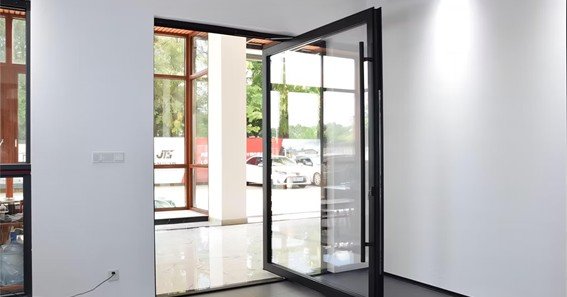If you’re seeking to improve your home’s energy efficiency and comfort, thermal insulated internal doors 1.6 W/m²K are a worthwhile investment. They help minimize heat transfer between rooms, leading to a more consistent indoor temperature and potentially lower heating or cooling costs. In this blog, we’ll explore the benefits of these doors, the importance of U-values, and tips for selecting and installing the right model for your space.
Understanding U-Values in Thermal Insulated Internal Doors 1.6 W/m²K
-
Definition of U-Value: The U-value (measured in W/m²K) indicates how quickly heat transfers through a building element. A lower U-value generally signifies better insulation and less heat loss.
-
What Does 1.6 W/m²K Mean? A U-value of 1.6 W/m²K for an internal door is relatively energy-efficient compared to standard doors. It denotes the door’s ability to resist thermal transmittance, offering a reasonable balance between insulation performance and cost.
-
Regulatory Standards: In many regions, building regulations specify acceptable U-values for doors and windows to ensure better energy efficiency. An internal door with a U-value of 1.6 W/m²K often meets or exceeds these benchmarks, depending on local guidelines.
Key Benefits
-
Enhanced Comfort
-
Maintaining consistent indoor temperatures is easier when internal doors aren’t letting heat escape into cooler adjacent spaces, or vice versa.
-
Reduced drafts can help stabilize the climate in individual rooms, making them more comfortable year-round.
-
-
Energy Savings
-
By minimizing heat transfer, your HVAC system doesn’t need to work as hard. This can lead to a noticeable reduction in energy bills over time.
-
For those in climates with significant seasonal temperature swings, the energy savings can add up quickly.
-
-
Noise Reduction
-
Many thermal-insulated doors come with improved soundproofing qualities. This additional benefit is invaluable if you’re seeking a quieter, more peaceful living environment.
-
-
Durability and Quality
-
Doors engineered for better insulation are often made from robust materials like solid wood cores, engineered timber, or advanced composites.
-
High-quality seals and gaskets at the perimeter of the door enhance both insulation and longevity.
-
Choosing and Installing Thermally Insulated Internal Doors
-
Material Selection: Opt for doors with a solid or engineered timber core for optimal insulation. Composite doors with high-density cores can also provide excellent thermal performance.
-
Proper Sealing: Look for models with premium weather stripping or integrated seals around the edges. This detail significantly influences the door’s overall U-value and thermal performance.
-
Professional Installation: Even the best door can underperform if installed incorrectly. Hiring a professional ensures the door is plumb, level, and sealed properly to achieve the stated U-value.
-
Check Certification: Reputable manufacturers often provide certification or data sheets verifying U-values. Check for labels like CE marking (in Europe) or other relevant regional certifications.
Why Opt for Thermal Insulated Internal Doors 1.6 W/m²K?
-
Energy Efficiency Compliance: A U-value of 1.6 W/m²K often meets or surpasses many local energy code requirements.
-
Cost-Effective Upgrade: It’s a straightforward way to improve indoor comfort without undertaking extensive renovations.
-
Versatile Design Options: Many manufacturers now offer insulated doors in various finishes and styles, ensuring you can maintain a cohesive interior aesthetic.
FAQ
-
Q: Do I need an insulated internal door if I already have insulated walls?
A: Yes. Even well-insulated walls can lose heat if the door has poor insulation. An insulated internal door ensures consistent energy efficiency throughout your home. -
Q: Are these doors heavier than regular doors?
A: Often, yes. Insulated internal doors typically have denser cores, which can make them slightly heavier. However, this added weight also contributes to better soundproofing and sturdiness. -
Q: Can an internal door with a U-value of 1.6 W/m²K be used as an exterior door?
A: Generally, no. Internal doors are not designed to handle external weather conditions, and their seals and finishes might not be suitable for outdoor use. Exterior doors usually have even lower U-values and are built to withstand moisture and temperature extremes. -
Q: Is it possible to improve the U-value further after installation?
A: You can enhance performance by adding or replacing seals or installing a door sweep at the bottom. However, the core thermal properties are determined by the door’s construction and can’t be significantly altered. -
Q: Are thermally insulated doors worth the higher initial cost?
A: In most cases, yes. The energy savings and increased comfort often outweigh the initial investment, especially in regions with extreme temperature variations.










